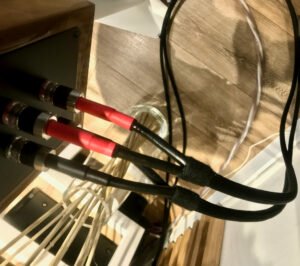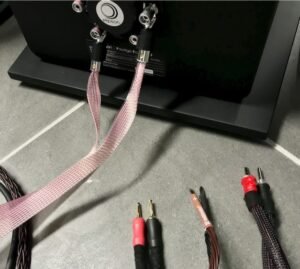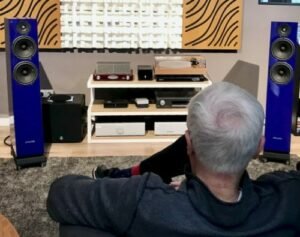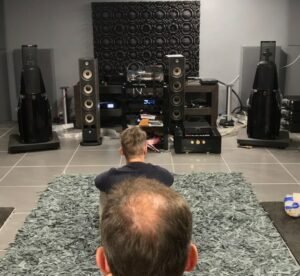
However, other enthusiasts save their cash by buying budget cables and claim they make no difference in sound quality. And rather than poking my nose between these two opposing camps and risk getting dragged into the ongoing battle. Let me elude the heated quarrel, offer an overview of speaker cable jargon, and give you some valuable tips on buying your own. Speaker Cable any difference
Speaker Cable

Also, resistance is affected by two key aspects: wire length and the cross-sectional area of the wire. And the shorter the wire is, the less resistance it will have. The trick here is to minimise wire lengths where possible but still ensure your speakers are positioned apart. It’s also essential that wire lengths to both speakers are the same to ensure they have equal impedance values. The cross-sectional area of the wire refers to the thickness, or gauge, of the wire. And, thicker a wire or, the lower the gauge, the less resistance. It is, therefore, a combination between speaker impedance, length and gauge that affects the resistance.
Wire material

Silver is slightly less resistive than copper, meaning a thinner gauge will still offer lower resistance. However, silver is expensive, so a thicker copper wire will still be cheaper. Gold, however, does not oxidise and can be used for open terminations. But, it has a higher resistivity to copper or silver and is unused as a speaker cable. As with all metals, the purer the wire used, the higher the cost (per metre). Many different levels of purity are available for cables. Whether or not this brings a significant benefit to the audio is down to personal preference and for you to decide for yourself. Speaker Cable any difference
Terminations

Bi-wire or single wire?
The final option with speaker wire is whether to bi-wire or not. If your speakers only have single wire connections, it makes this decision simple –single connections it is! But if your speakers have two sets of speaker connections, then they can be bi-wired. A perceived benefit of bi-wiring is that it can create a more open sound stage and increase levels of detail. But it’s argued that single wiring offers a more musically coherent sound. Again this is one for the die-hards to continue arguing with. Also, bear in mind that comparable quality bi-wiring is almost always more expensive than single-wire configurations. Speaker Cable any difference
Final considerations
I
Your Loudspeaker
Speakers are critical to any hi-fi system; they’re how you hear your audio. You might have noticed that the sound can differ depending on where they are in a room. And where you listen to them. Also, you might have the same kit collection as a friend or your favourite hi-fi retailer. But, they will sound different. Remember the golden rule:
- Every room is different, and every listener has other preferences.
- Also, you do not hear the same as your wife or friend.
- It’s OK if what works for a friend doesn’t work for you regarding set-up.
Start with a triangle.

But, of course, if you’ve got pets or kids, you might be more concerned with keeping them out of the way of tiny hands. And If you have the flexibility, consider rearranging your furniture and speaker positions to get the most out of your system. Most of us use rooms for multiple purposes. Watching TV, spending time with friends and family. Maybe playing games, eating, and listening to music. And your hi-fi system and speakers must work around these uses. Also, it’s worth considering what time of day you’re most often using your hi-fi. And positioning your speakers based on that. Speaker Cable any difference

Have fun
If you want to get the best enjoyment you have without letting the ideals cloud your enjoyment. And if you’ve spent so long on positioning your speakers that it’s stopped being fun, take a break. Also, don’t be scared to revert to how it was before you started making any adjustments. But, on the other hand, don’t be scared to start again, and don’t worry too much about it.
Positioning
- If you’re thinking about a surround sound system, try to place your subwoofer at least 30cm from a corner to prevent unnecessary reverberation and echo.
- Are you working from home? If you have speakers on a desk or a shelf, place them on foam or similarly absorptive material. And prevent the desk or shelf from reverberating too much.
- And avoid placing items directly in front of your speakers, whether CD stacks or general décor.
- Whether you have your speakers on stands, on a shelf or wall-mounted, remember speakers sound best when they are level with your ears when listening to them.
I love seeing listeners’ set-ups. And you are welcome to share how you’ve positioned your speakers. And if you enjoyed reading ‘Speaker Cable any difference’, please share with friends. Also, if you want to see some of the sets ups I have done, please flow this link – Audio system set-up
Perkune Best budget audiophile cables